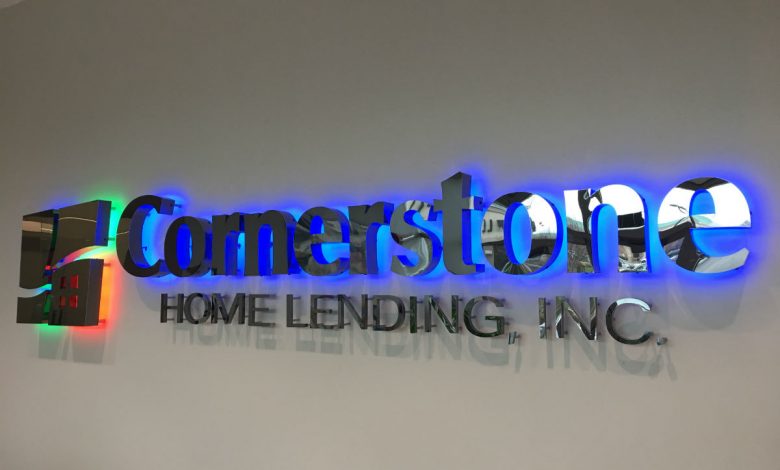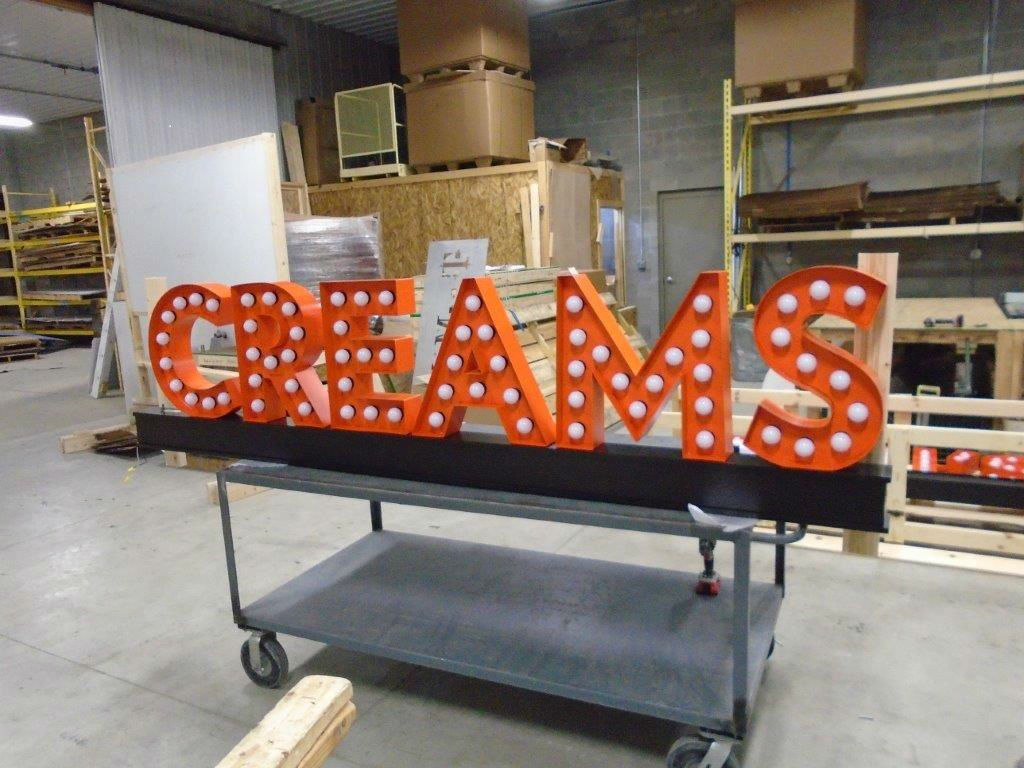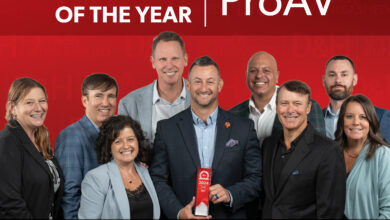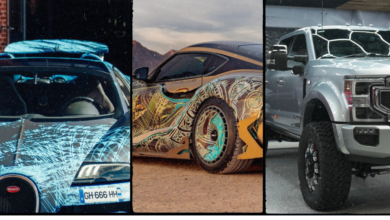The Learning Channel: Q&A Session With Channel Letter Wholesalers and Experts
Read on for helpful information from channel letter wholesalers and experts.
When looking at a channel letter project, it is easy to notice several different parts working in unison to make the total sign an effective display-the three-dimensional, carefully-formed elements. Perhaps the letters adorn a storefront, spelling out a brand name in large font. During the nighttime, these letters are illuminated brightly by LEDs, easily seen from a distance. This is a professional and impactful sign, located in a prominent place. What isn’t so easy to see are the unsung components and efforts that go into the channel letters before they are installed. How are the letters fabricated? What equipment is used? What are some major considerations for sign shops?
For this article, several questions were posed to some knowledgeable industry experts-all sharing unique perspectives within the discipline of channel letters. This resulted in helpful advice and insight for those interested in tackling channel letter jobs. And it made for a candid, perceptive question-and-answer format that presented angles on everything from design to lighting to general business methods.
The players in the field weighed more heavily toward the wholesale channel letter side with three representatives that included: John Lewis, president of Direct Sign Wholesale; Warren Sciortino, owner of LetterFAB; and Kim Cronin, sales at Sign America Inc. In addition, Dion Flaska, project manager at Gemini Sign Products, served as the voice of the sign manufacturer. And finally, the sign makers, those who put these words into practice, are the benefactors of this session. So, let’s start with this group, leaning on advice from our experts.
*Questions asked from Sign & Digital Graphics magazine are labeled as “SDG” throughout the article.
SIGN SHOP ROLE
There are several resources available for sign shops interested in channel letter production. In many cases, a wholesaler will provide a fast and professional outlet for letter fabrication. In other instances, shops may desire to go it alone. Whatever the path, shops should be well-armed to produce and/or install channel letters in a professional manner.
Some shops have been doing this work for years; employing CNC routers, design software, and cutting and bending tools for these types of jobs. Other shops have only recently thought of producing letters, realizing the advantages associated with doing that. These shops must become more educated on how to get involved.
SDG: What should sign shops do first if they have never made channel letters, but are interested in starting?
Cronin: Call us!
SDG: Good point. But what if shops want to add this work internally?
Cronin: Obviously, we don’t want more competition. But if someone is considering starting a channel letter business, they would first need a CNC router table to cut faces and backs.
Flaska: A CNC router for cutting backs and faces, and return bender at a minimum. An auto trim notcher is optional, but (it’s) time saving.
SDG: Are there business considerations to adding this type of work?
Flaska: Cost analysis, definitely. Also, is the staff capable of handling the work that would come their way including large, time-consuming jobs?
Lewis: If you do not produce 20-plus sets of letters per month on average, you should not produce letters internally. You would be better off using that space to do higher margin jobs than a commoditized product such as channel letters. So, with that, if you have never made channel letters you should not start due to experience, costs of materials, and most importantly time.
SDG: So then, what are the major benefits to working with a wholesaler?
Sciortino: Retail sign companies appreciate that we can provide them with a superior product because of our skill level and state-of-the-art equipment within a week or two, in turn keeping them busy with selling and installing. We are their manufacturing facility.
Cronin: Automated production, quick turnaround, doesn’t increase their overhead ordering from a wholesaler; so (it is a) significant savings to them.
Lewis: When you outsource to a professional wholesaler the benefits are pretty substantial. Fixed costs, speed, quality and experience.
LIGHTING ASPECTS
Since the inclusion of LEDs in sign projects, specifically channel letters, sign makers and their customers have seen significant gains in efficiency and sign life. This has added to the quality of the overall sign, and it has cut back on the amount of maintenance that is required with channel letters.
In previous years, other lighting methods such as neon presented some challenges in reliability. Today, LEDs are the top choice among lighting options for channel letters.
SDG: How has efficient and reliable lighting changed the channel letter market?
Flaska: LED technology has improved in reliability over the last decade. With proper installation and wiring, today’s LEDs can outperform and outlast older model LEDs, neon and fluorescents.
Cronin: We used to be a neon shop. LED lighting has come a long way since its introduction into the channel letter market. Low voltage, reliable, no breakage and shipping is less complicated. There are so many options for LED lighting now! One of them is the RGB (Red, Green, Blue) lighting that allows the customer to have different colors of light in the same sign.
SDG: What are some specific ways in which LEDs have impacted quality?
Lewis: LED companies have transformed the channel letter business in a few ways. If you go with a top brand you can get up to a 10-year warranty for the LED. That is amazing. The bad part is tons of people use local sign shops or local wholesalers that use inferior LED brands and they look horrible within six months to a year-all to save a dollar. Your reputation is on the line each and every time you go with the cheapest option. Buy smart.
Sciortino: You’ve got good LEDs and you’ve got some that are not so good. We only go with the good LEDs. We haven’t had any LED problems. It’s not neon. The LED signs just don’t break. The quality today is just so much better with LEDs. When I sell an LED sign, I doubt it ever breaks. It’s just a very quality product.
SDG: Do you have to be a licensed electrician to install channel letters?
Flaska: Installation by a licensed electrician is highly recommended and may be required depending on local code.
Lewis: In certain states, you have to be, or have, a licensed electrician. Texas and California are two that come to mind.
DESIGN, INSTALL, AND IMPLEMENTATION
This seems like a quick three-step process-design, produce, install-but really there is a lot of work behind the scenes. From concept to execution there are many moving pieces. If using a wholesaler, the design needs to be sent along to begin production, and then shipping and installation dates should be clearly specified to all parties-this includes the wholesaler, the shop and the end-user.
When everything comes together and is implemented precisely, the customer can plan on his or her new channel letter sign to be set in place for a very long time.
SDG: From design to install, on average, how long does a channel letter project take?
Cronin: Depending on the size of the job, it can be done between three days to four weeks. If a new customer places an order and needs it fast, we do it! The time of year is also a factor, we are usually busier from April until November, so lead times could be longer. But it just depends.
Flaska: Gemini is not on the design side, but our production time on LED-lit letters is typically two to three weeks after final art approval plus shipping time.
SDG: Is there any sort of specific timeline that you follow?
Lewis: Five to eight days production time; one to three days anywhere in the 48 states for shipping. Then inspect the sign and install the sign. If you are organized, you can order and install a custom set of channel letters within two weeks now.
SDG: What is the process of getting designs to the wholesaler so they can accurately produce the cans?
Cronin: The customer creates the layout and emails a vector file to us. This file is used to produce the sign.
Lewis: Vectorized PDF artwork with sizes, sign type and colors is all that you need to provide to make your channel letters happen.
Sciortino: We have to have a vector format file to produce what is called a .DXF file, which the CNC equipment can then read lines and arcs. After that, there are many sensors, motherboards, and highly engineered components to drive these machines. There are sign companies out there that do a really nice job on design. But then there are sign companies out there that don’t even know how to estimate.
SDG: What essential equipment/tools should sign makers obtain to produce channel letter work in their shops?
Cronin: A computer with Flexi or another sign program, channel letter machine, trim machine and a staple machine.
Sciortino: Not all channel letters are made the same. Only companies with the newest, most accurate CNC equipment can play in the same league for consistent quality and speed of getting sign projects to the consumers in a timely manner.
SDG: Can you think of a recent project that had some unique features or methods that set it apart?
Cronin: Trimless channel letters are becoming more and more popular. Just like it sounds, these are channel letters that are manufactured without trimcap and the faces are of a thicker acrylic. We have also recently done some fabricated letters with baffles and LED bulbs (Marquee style).
Yes, there are many aspects to creating channel letters. And several players make up the channel letter community. Sign shops may take different avenues to designing, fabricating and installing letters. In the end, however, sign makers want to make sure they are extending the best possible product in a timely manner.








